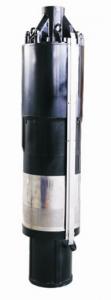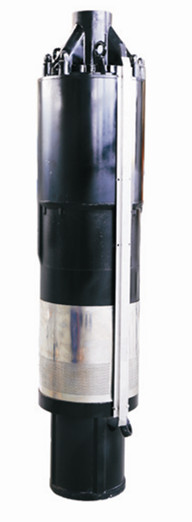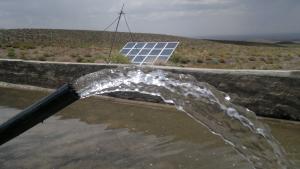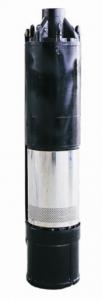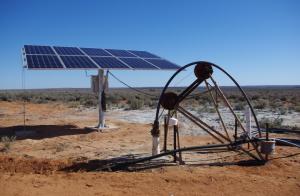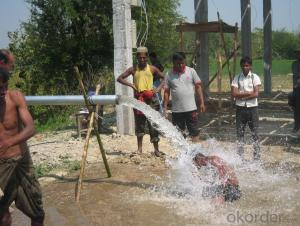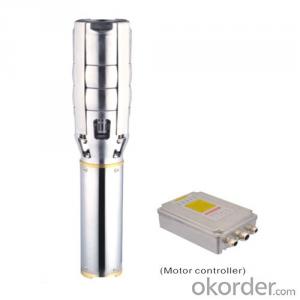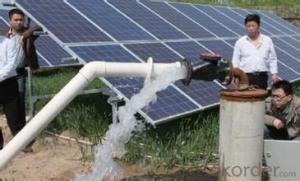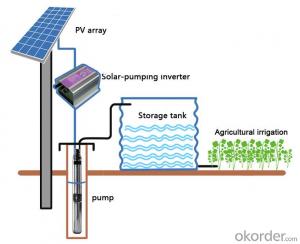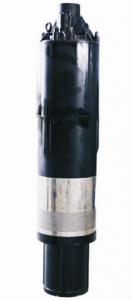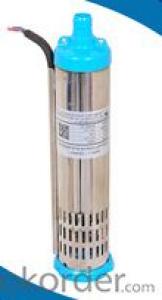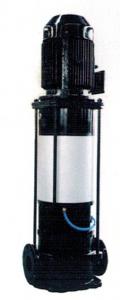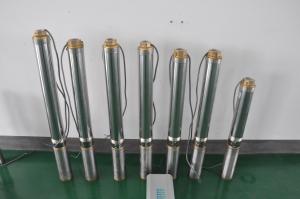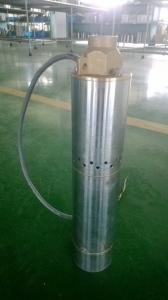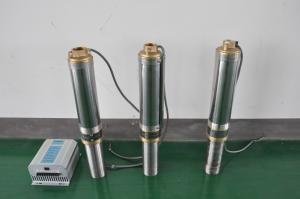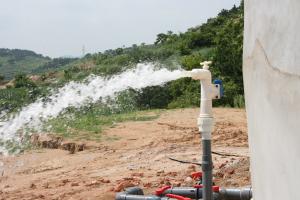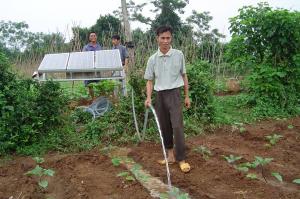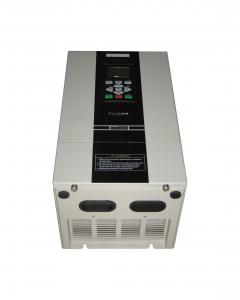Solar Pump Company Solar Water Pump 3ds-14
- Loading Port:
- China Main Port
- Payment Terms:
- TT OR LC
- Min Order Qty:
- -
- Supply Capability:
- 300 sets /month
OKorder Service Pledge
OKorder Financial Service
You Might Also Like
Product description:
Product: Solar water pump
Model:3DS-14
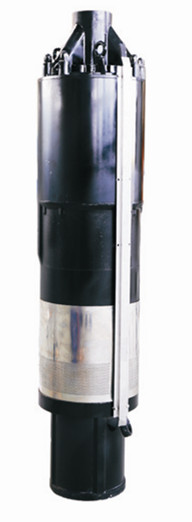
Appilication:
submersible pump
for deep well or pond or lake
for irrigation of a big farm with 12000 m2
Product specification:
flow rate:20m3/ hour, 160m3/day.
lift: 10m-50m
pump diameter: 296mm
well diameter more than 310mm
with BLDC motor, motor power:4000W
but only need solar power:2200W, our pump can save more than 50% solar panel power.
Material:
Pump inside: stainless steel and wearable nylon,it enables our solar pump to have 10 years sevice life.
Motor length:30cm,80% shorter than other motors. So that you can pump 80% more water by our solar pump.
Certification:
3 International patent
ISO9001
CE
Warranty:2 years
- Q: Can a solar pump be used in areas with limited access to water treatment plants?
- Yes, a solar pump can be used in areas with limited access to water treatment plants. Solar pumps are designed to draw water from various sources such as wells, boreholes, rivers, or lakes, and can be used to supply water for various purposes including domestic use, irrigation, or livestock. The use of a solar pump eliminates the need for grid electricity or fossil fuel-powered pumps, making it a sustainable and cost-effective solution for areas without access to traditional water treatment plants. However, it is important to note that while a solar pump can provide access to water, it does not treat the water, so additional treatment methods may be required to ensure the water is safe for consumption.
- Q: How does a solar pump handle fluctuations in water quality?
- A solar pump is designed to handle fluctuations in water quality efficiently. The pump uses an integrated filtration system that can remove impurities and sediment from the water, ensuring a consistent flow rate even when the water quality changes. Additionally, some solar pumps are equipped with sensors and automatic controls that can detect variations in water quality and adjust the pump's performance accordingly. This helps maintain the pump's efficiency and prolong its lifespan, even in challenging water conditions.
- Q: Can a solar pump be used in residential rainwater harvesting systems?
- Yes, a solar pump can be used in residential rainwater harvesting systems. Solar pumps are an energy-efficient and sustainable option for pumping water, making them a suitable choice for residential rainwater harvesting systems that aim to collect and store rainwater for various uses such as irrigation, toilet flushing, and laundry. By harnessing the power of the sun, solar pumps can operate without the need for electricity from the grid, reducing energy costs and environmental impact.
- Q: How long does a solar pump last?
- A solar pump typically has a lifespan of around 20 to 25 years, depending on factors such as the quality of the pump, maintenance, and usage patterns.
- Q: Can a solar pump be used for water supply in public parks or gardens?
- Certainly, a solar pump is capable of supplying water in public parks or gardens. Solar pumps offer a great alternative to traditional pumps powered by electricity or diesel, as they utilize solar energy to pump water. They are cost-effective, eco-friendly, and require minimal maintenance. Given that public parks and gardens often have ample sunlight in open spaces, they are ideal locations for solar pumps. These pumps can be used to provide water for irrigation, fountains, and other water features, ensuring a sustainable and dependable water supply. Furthermore, solar pumps can be integrated with water storage systems, enabling the storage of water during sunny periods for use during cloudy days or at night. All in all, solar pumps represent a practical and efficient solution for water supply in public parks or gardens.
- Q: What is the expected efficiency of a solar pump system in converting solar energy to water pressure?
- The expected efficiency of a solar pump system in converting solar energy to water pressure can vary depending on various factors such as the design and quality of the system, sunlight availability, and the specific pump technology used. However, on average, a well-designed and properly maintained solar pump system can achieve an efficiency ranging from 20% to 40%.
- Q: How does a solar pump handle variations in sunlight?
- A solar pump handles variations in sunlight by adjusting its output based on the intensity of sunlight available. It uses sensors and controllers to monitor the incoming solar radiation and adapts its operation accordingly to optimize efficiency and output. This allows the pump to function effectively even in situations with fluctuating sunlight levels, ensuring consistent performance throughout the day.
- Q: How does the distance between the solar panels and the pump system affect its performance?
- The performance of the solar pump system can be significantly influenced by the distance between the solar panels and the pump system. To begin with, the efficiency of the solar panels relies on the amount of sunlight they receive. When the panels are positioned in close proximity to the pump system, there is minimal energy loss during transmission, resulting in higher efficiency. Conversely, if the panels are situated at a considerable distance from the pump system, energy may be severely diminished due to resistance in the transmission lines, leading to decreased overall performance. Moreover, the distance between the panels and the pump system impacts the efficiency of the electrical wiring. Longer distances necessitate longer wiring, which can increase resistance and cause power loss during transmission. Furthermore, longer wiring raises the likelihood of electrical faults or damage, resulting in reduced performance or even system failure. Additionally, the distance between the solar panels and the pump system affects the system's reliability. Placing the panels far away exposes them to a higher risk of damage from environmental factors such as extreme weather conditions, theft, or vandalism. Additionally, maintenance and repair become more challenging and time-consuming when the distance is greater, potentially impacting the system's overall performance and uptime. Lastly, the distance between the solar panels and the pump system may also impact the overall cost of the system. Longer distances necessitate more materials, including wiring, connectors, and additional mounting structures, leading to increased installation and maintenance costs. Furthermore, the cost of energy loss during transmission should also be taken into account when determining the optimal distance between the panels and the pump system. In conclusion, the distance between the solar panels and the pump system plays a pivotal role in determining its performance. Placing the panels in close proximity to the system can enhance efficiency, reduce power loss, improve reliability, and potentially lower costs. It is important to carefully consider and balance these factors in order to optimize the performance of the solar pump system.
- Q: Can a solar pump be used for waterfalls and cascades in gardens?
- Yes, a solar pump can be used for waterfalls and cascades in gardens. Solar pumps are designed to harness energy from the sun and convert it into power to run water features. They are a sustainable and eco-friendly option, providing a reliable source of energy to create stunning waterfalls and cascades in gardens without the need for electricity or traditional pumps.
- Q: Can a solar pump be used in conjunction with a battery backup system?
- Yes, a solar pump can be used in conjunction with a battery backup system. The solar panels generate electricity to power the pump during daylight hours, and any excess energy can be stored in batteries for use during cloudy or nighttime conditions. This ensures a continuous water supply even when solar energy is not available.
Send your message to us
Solar Pump Company Solar Water Pump 3ds-14
- Loading Port:
- China Main Port
- Payment Terms:
- TT OR LC
- Min Order Qty:
- -
- Supply Capability:
- 300 sets /month
OKorder Service Pledge
OKorder Financial Service
Similar products
Hot products
Hot Searches
Related keywords
